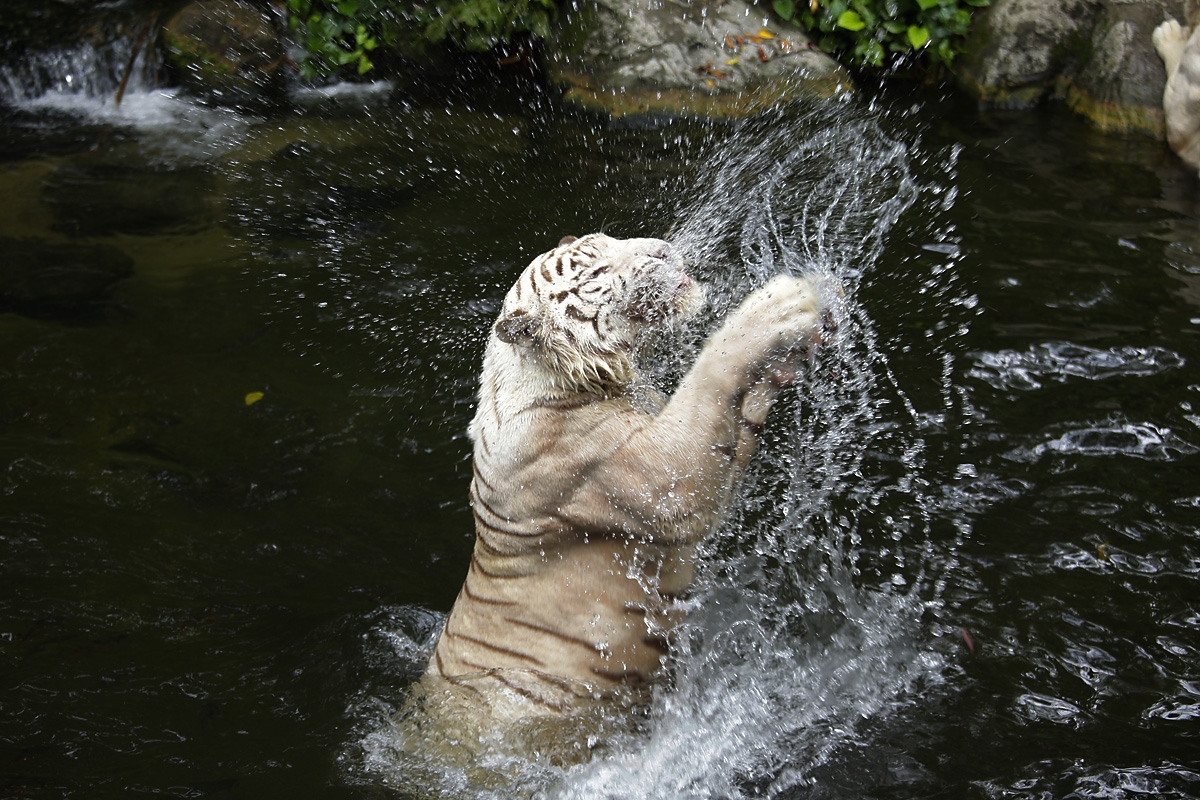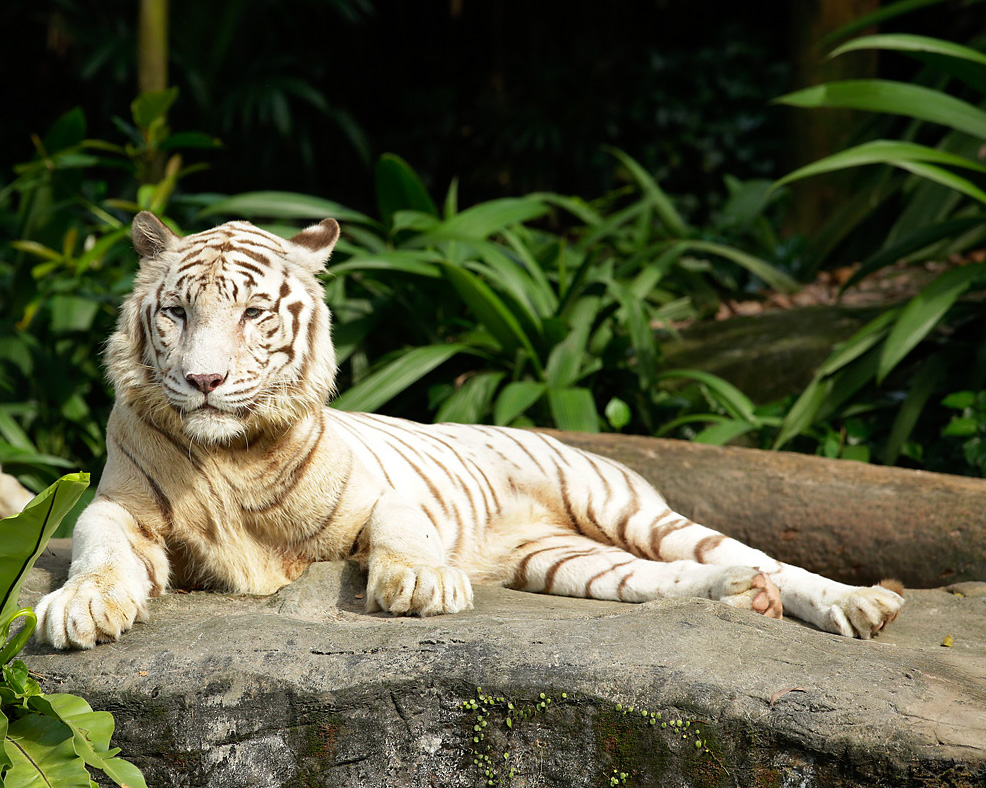After an impressive almost 18-year life, Omar, the oldest Bengal white tiger at the Singapore Zoo, has passed away.
The last surviving sibling of a set of triplet white tiger cubs who came to our shores from Taman Safari in Indonesia, Omar's regal presence became one that visitors to the zoo looked forward to, and in many cases, specifically came to see.
Most wild white tigers have a life span of 10 to 15 years, while those in captivity can live from 16 and 20 years. For Omar, who would have turned 18 in September, he's had a long life. In his old age, however, he had unfortunately been suffering from melanoma (a type of skin cancer), and degeneration of his joints.
He was looked after by a special team of keepers and vets under the zoo's senior animal care programme — one which looks after Inuka, the polar bear, for instance, as well as other iconic elderly animals.
The decision was made to euthanise him as his quality of life was deteriorating with the worsening of his health as he battled multiple health problems.
Here's a pic of him jumping from the water in his enclosure in his fitter days:
 Photo courtesy of Wildlife Reserves Singapore
Photo courtesy of Wildlife Reserves Singapore
Omar's sisters Winnie and Jippie, who came to Singapore with him back in April 2001, passed away a few years ago — Jippie was euthanised in 2012 after falling victim to terminal illness, while Winnie developed a tumour in her jaw bone and also had to be put down two years later, just shy of 15 years old.
Omar's passing leaves behind Pasha and Keysa, two four-year-olds who came to us two years ago from the Batu Secret Zoo, so you can still see them when you next visit the enclosure.
See the zoo's announcement of his passing here:
Nordin’s death was ruled as a suicide in 2009, and the zoo later introduced safety enhancements to more dangerous exhibits including signs, emergency buttons and increased patrols by keepers and staff.
Top photo courtesy of Wildlife Reserves Singapore
If you like what you read, follow us on Facebook and Twitter to get the latest updates.
